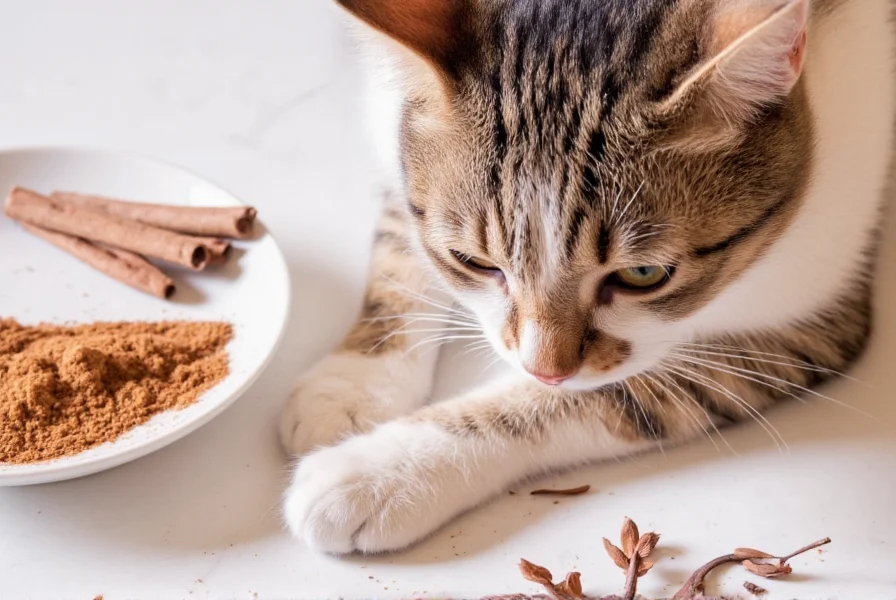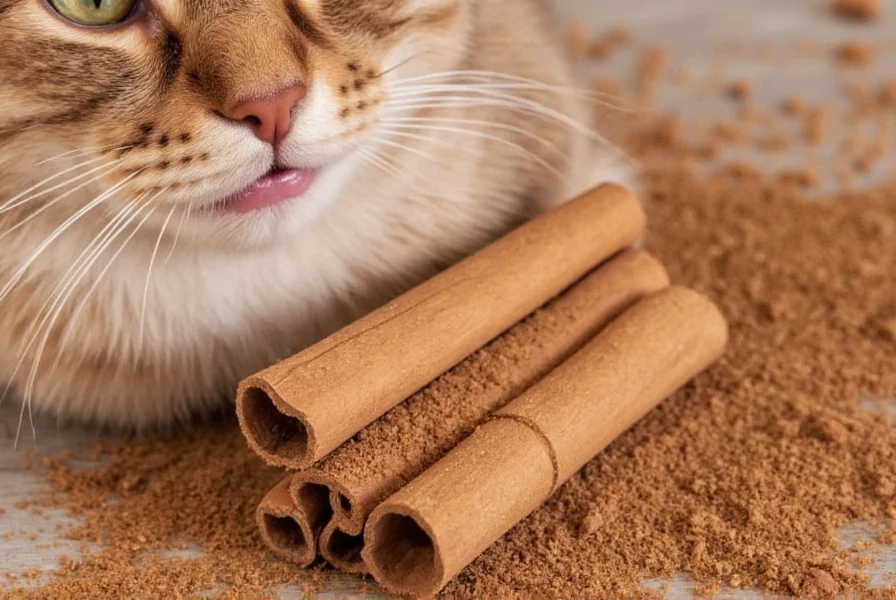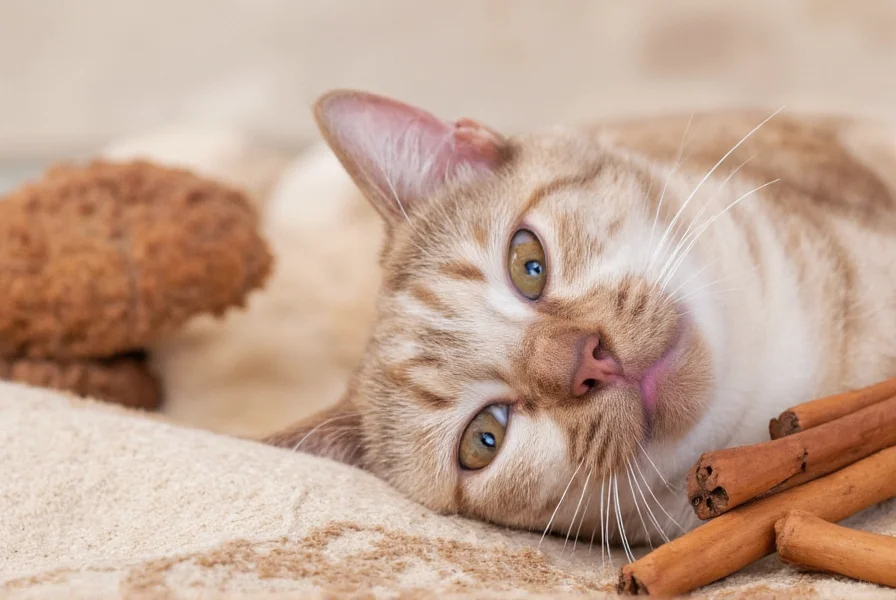Cinnamon might be a beloved spice in human kitchens, but it poses significant health risks to our feline companions. Understanding why this seemingly harmless substance can be dangerous for cats is crucial for responsible pet ownership. Unlike humans, cats lack specific liver enzymes needed to process certain compounds found in cinnamon, making them particularly vulnerable to its toxic effects.
Why Cinnamon Is Harmful to Cats
Cats have a unique metabolic system that differs significantly from humans. The primary concern with cinnamon is its coumarin content—a natural compound that gives cinnamon its distinctive flavor and aroma. While humans can safely metabolize small amounts of coumarin, cats lack the necessary enzymes to process it effectively.
When cats ingest cinnamon, whether through direct consumption or exposure to cinnamon-scented products, they face several potential health issues:
- Oral irritation: Cinnamon can cause chemical burns in the mouth, leading to drooling, pawing at the mouth, and reluctance to eat
- Hypoglycemia: Cinnamon may lower blood sugar levels, causing weakness, lethargy, and potentially collapse
- Liver damage: Prolonged or significant exposure can lead to liver toxicity
- Respiratory distress: Inhaling cinnamon powder can irritate nasal passages and lungs
- Digestive upset: Vomiting and diarrhea are common reactions

Symptoms of Cinnamon Exposure in Cats
Recognizing the signs of cinnamon exposure can help you respond quickly if your cat encounters this spice. Symptoms may appear within minutes to hours after exposure and can range from mild to severe:
| Symptom Type | Early Signs | Severe Symptoms |
|---|---|---|
| Oral | Drooling, pawing at mouth | Swelling, chemical burns, refusal to eat |
| Digestive | Mild vomiting, occasional diarrhea | Severe vomiting, bloody diarrhea, dehydration |
| Systemic | Lethargy, mild weakness | Hypoglycemia, liver failure, respiratory distress |
Immediate veterinary attention is necessary if your cat shows severe symptoms like difficulty breathing, collapse, or persistent vomiting. Even seemingly mild reactions should be monitored closely, as complications can develop hours after initial exposure.
Common Sources of Cinnamon Exposure
Cat owners might not realize how many household items contain cinnamon. Understanding these sources can help prevent accidental exposure:
- Kitchen products: Baked goods, spice blends, and cooking ingredients
- Home fragrances: Cinnamon-scented candles, air fresheners, and potpourri
- Natural remedies: Some homemade flea repellents or cleaning products
- Seasonal decorations: Holiday ornaments, scented pinecones, and decorative arrangements
- Essential oils: Cinnamon oil diffusers or topical applications

What to Do If Your Cat Is Exposed to Cinnamon
If you suspect your cat has come into contact with cinnamon, follow these steps:
- Remove the source: Immediately clear any cinnamon from your cat's environment
- Rinse affected areas: Gently flush mouth or skin with water if recently exposed
- Do not induce vomiting: Unless specifically instructed by a veterinarian
- Contact your vet: Provide details about the exposure (amount, form, time)
- Monitor symptoms: Keep track of any changes in behavior or health
Your veterinarian may recommend bringing your cat in for examination, especially if significant exposure occurred. Be prepared to share what product was involved, how much your cat might have ingested, and when the exposure happened. This information helps veterinarians determine the appropriate treatment protocol for cinnamon toxicity in cats.
Preventing Cinnamon Exposure in Your Home
Prevention is always better than treatment when it comes to keeping your cat safe from harmful substances like cinnamon. Consider these practical strategies:
- Store spices securely in closed cabinets away from curious paws
- Avoid using cinnamon-scented products in areas your cat frequents
- Be cautious during holiday baking seasons when cinnamon use increases
- Read labels on natural cleaning products and pet remedies
- Keep essential oils containing cinnamon well out of reach
- Supervise your cat around decorative items that might contain cinnamon
Creating a cat-safe environment requires awareness of common household hazards. While cinnamon might seem harmless to humans, understanding its potential dangers for cats helps prevent unnecessary health emergencies. If you're looking for natural scents that are safe for cats, consider catnip, silver vine, or valerian root instead of cinnamon-based products.
Frequently Asked Questions About Cinnamon and Cats
Can cats have a tiny amount of cinnamon?
No amount of cinnamon is considered safe for cats. Even small quantities can cause oral irritation, digestive upset, and other health issues due to cats' inability to properly metabolize compounds in cinnamon. Unlike humans, cats lack specific liver enzymes needed to process cinnamon safely, making any exposure potentially harmful.
Is cinnamon essential oil more dangerous than ground cinnamon for cats?
Yes, cinnamon essential oil is significantly more concentrated and therefore more dangerous than ground cinnamon. Essential oils contain highly concentrated compounds that can cause severe reactions even with minimal exposure. Diffusing cinnamon oil creates airborne particles that cats can inhale, potentially causing respiratory distress, while direct contact can lead to chemical burns on their skin or paws.
How quickly do symptoms appear after cinnamon exposure?
Symptoms can appear within minutes to several hours after exposure. Immediate reactions often include drooling, pawing at the mouth, and vomiting. More serious effects like hypoglycemia or liver issues may develop over 12-24 hours. The timing depends on the amount exposed, the form of cinnamon (powder, oil, or in food), and the individual cat's sensitivity.
Can cinnamon be used as a natural flea repellent for cats?
No, cinnamon should never be used as a flea treatment for cats. Despite some claims about natural flea repellents, cinnamon can cause significant harm to cats through skin irritation, respiratory issues, and potential toxicity. Safe, veterinarian-approved flea treatments are always the best choice for protecting your cat from parasites without risking their health.
Are certain cat breeds more sensitive to cinnamon than others?
All cat breeds are equally vulnerable to cinnamon toxicity because the issue relates to feline physiology rather than breed-specific characteristics. Cats of all breeds, ages, and sizes lack the necessary liver enzymes to metabolize coumarin and other compounds in cinnamon effectively. Kittens, senior cats, and cats with pre-existing health conditions may experience more severe reactions due to their compromised systems.











 浙公网安备
33010002000092号
浙公网安备
33010002000092号 浙B2-20120091-4
浙B2-20120091-4